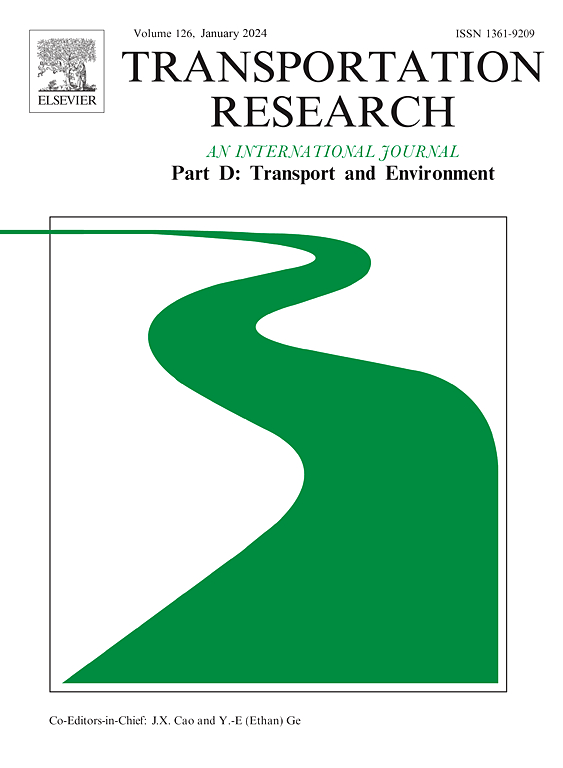Autonomous vehicle pollution monitoring: An innovative solution for policy and environmental management
IF 7.3
1区 工程技术
Q1 ENVIRONMENTAL STUDIES
Transportation Research Part D-transport and Environment
Pub Date : 2025-02-01
DOI:10.1016/j.trd.2024.104542
引用次数: 0
Abstract
Vehicle emissions create growing environmental problems that need creative monitoring methods. This study introduces a real-time pollution monitoring system leveraging deep convolutional neural networks to detect and track vehicles using urban surveillance cameras. By integrating Faster-RCNN and YOLO models, the system estimates vehicle speeds and pollutant emissions based on homography transformations for accurate real-world distance measurements. The system’s robustness is demonstrated through trials, where YOLO outperformed Faster-RCNN in speed and efficiency for urban traffic monitoring. The results imply that real-time emissions data may guide policy choices to lower greenhouse gas emissions, allowing actions such as traffic limitations based on emissions, congestion pricing, and best public transit routes. This scalable, cost-effective system provides a new framework for cities to monitor pollution without requiring additional infrastructure investment, making it particularly relevant for resource-constrained urban environments.

求助全文
约1分钟内获得全文
求助全文
来源期刊
CiteScore
14.40
自引率
9.20%
发文量
314
审稿时长
39 days
期刊介绍:
Transportation Research Part D: Transport and Environment focuses on original research exploring the environmental impacts of transportation, policy responses to these impacts, and their implications for transportation system design, planning, and management. The journal comprehensively covers the interaction between transportation and the environment, ranging from local effects on specific geographical areas to global implications such as natural resource depletion and atmospheric pollution.
We welcome research papers across all transportation modes, including maritime, air, and land transportation, assessing their environmental impacts broadly. Papers addressing both mobile aspects and transportation infrastructure are considered. The journal prioritizes empirical findings and policy responses of regulatory, planning, technical, or fiscal nature. Articles are policy-driven, accessible, and applicable to readers from diverse disciplines, emphasizing relevance and practicality. We encourage interdisciplinary submissions and welcome contributions from economically developing and advanced countries alike, reflecting our international orientation.

 求助内容:
求助内容: 应助结果提醒方式:
应助结果提醒方式:


